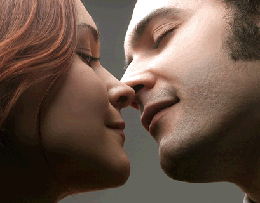Inspirational Quotes
"I have learned that people will forget what you said; people will forget what you did, but people will never forget how you made them feel."
--Maya Angelou
"Live as if your were to die tomorrow. Learn as if you were to live forever. You must learn to be still in the midst of activity and be vibrantly alive in repose."
--Gandhi
Relationships
Relationships are extremely important in the mental growth of a person.

A healthy relationship helps to cope better with every day stressors, and a tremendous source of support.
On the flip side, a relationship that isn't working can be a huge emotional drain. The good news is that, even if your relationship is on the rocks, you can take steps to repair trust and rebuild a connection.
Relationships take work, commitment, and a willingness to adapt and change through life as a team. But the rewards far outweigh the effort. In fact, they make life worth living.
- Tuning out If a parent is always busy or self-absorbed, children may shut down and learn to avoid any intimate connections. As adults, they may act emotionally distant or cold towards their partners.
- Insecure relationships If a parent is inconsistent, the child may become insecure and fearful, and unsure what to expect. As grown adults, they may be the type that are attentive and caring one moment and cold the next.
- Aggressiveness and anger Children of abusive parents can, as grown adults, become insensitive to their partners needs and may have difficulty with love and trust.
- Slow development Children may experience physical and cognitive delays, which can lead to mental problems and social difficulties as adults.
Anxious-Preoccupied
Dismissive-Avoidant
Fearful-Avoidant
secure
The Heart Brake of a Break Up
A Couple With Good Stress Tolerance Lasts Longer
Mental Health: It All Starts In You
Attachments
You were born preprogrammed to bond with one very significant person your primary caregiver, probably your mother.
Like all infants, you were a bundle of emotions intensely experiencing fear, anger, sadness, and joy. The emotional attachment that grew between you and your caregiver was the first interactive relationship of your life, and it depended upon nonverbal communication. The bonding you experienced determined how you would relate to other people throughout your life, because it established the foundation for all verbal and nonverbal communication in your future relationships.
Insecure Attachments
Insecurity can be a significant problem in our lives.
It takes root when an infant's attachment bond fails to provide the child with sufficient structure, recognition, understanding, safety, and mutual accord.
Did you know? Emotional insecurities might lead to:
Source: Helpguide
Relationships Types in Adults
Just like with children, four styles of attachments have been identified in adults.

John Bowlby first introduced attachment theory to help explain the nature of attachments between children and parents.
Cindy Hazan and Phillip Shaver took it a step further, and studied how these attachments affect future relationships in grown adults.
They identified the following attachment types:
Anxious-preoccupied
People who have this attachment style tend to be proccupied with the way they are perceived by others. They constantly worry about their level of intimacy in their relationship.
They tend to become overly anxious and are often seen as "clingy" by their friends and family. This constant need for approval and intimacy often pushes other people away; and becomes one of the major causes for the breakup of a relationship.
Dismissive-avoidant
People with this attachment style tend to prefer to be emotionally distant in relationships. They often have a desire for a high level of independence and little intimacy with their partner.
It is quite common for them to view their partner less positively than they view themselves. People with a Dissmissive-Avoidant style see emotions and feelings as a sign of weakness, and this is generally perceived as a cover up for a fear of rejection.
Hence, they reject those whom they feel most vulnerable too. In this case, their relationship partner. And last, they often make poor candidates for therapy due to their dismissive nature and denial.
Fearful-avoidant
People with this attachment style tend to be fearful of getting close to others. This is a similar style to the Dismissive-avoidant. However, these people view their partner (or potential partner) as above themselves; and they typically have problems with self-esteem. Another difference is that they have a desire for emotional closeness, but feel vulnerable doing so.
Secure
This style of attachment results from a history of warm and responsive relationships. These people generally have a positive anh equal view of themselves and their partner. They are also comfortable becoming intimate with their partner, or being alone. This last group reports the highest rate of satisfaction with their partners than people in the other groups.
Related Topics
Please visit the following links:
Online Citations
Attachments and Adult Relationships: How The Attachment Bond Shapes Adult Relationships. Helpguide.org
Citations
Bretherton I, "The origins of attachment theory: John Bowlby and Mary Ainsworth". Developmental Psychology, 1992; 28 (5): 759775.
Mayhew, B. "Between love and aggression: The politics of John Bowlby". History of the Human Sciences, 2006;19 (4): 1935.
Article created: September 10, 2010
Updated: October 29th, 2011
BACK TO TOP
![]() This site complies with the HONcode standard for trustworthy health information:
This site complies with the HONcode standard for trustworthy health information:
verify here.
Copyright © 2013 Psychology One. All rights reserved. This site is for education & information purposes. This site is not a substitute for professional psychological, medical or psychiatric treatment.